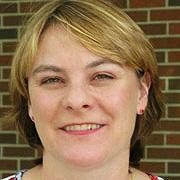TORONTO, August 27, 2019 – This fall will be the first full school year where parents, coaches and officials will be required to sign a concussion code of conduct and review concussion awareness resources as a result of additions to Rowan’s Law. The law passed last year, mandates the removal from sport and return to sport protocols for concussions and the new protocols, which came into effect on July 1, provide rules of behaviour to minimize concussions while playing sports.
Recently, the provincial government also included concussion awareness in its updated curriculum for schools which now includes lessons on concussion safety starting in Grade 1. According to statistics from the Public Health Agency, there were approximately 46,000 diagnosed concussions in 2016-17 by hospital emergency departments for children and youth 5-19 years of age. Moreover, 1 in 2 Canadians have little or no knowledge about concussion and only 4 in 10 are aware of available concussion tools or resources.
Alison Macpherson, a professor in the School of Kinesiology and Health Sciences, has led several studies on concussion in athletes and young children. Macpherson researches ways to help kids stay active and safe, whether playing on the hockey rink, walking to school, or riding in the backseat of a car. Research by Macpherson and her team influenced Hockey Canada’s previous decision to change the age at which body checking is introduced. Her expertise in injury prevention is helping to shape child safety policy in Canada.
Professor Macpherson is available for interviews and can speak about:
- How will the latest changes to the curriculum and Rowan’s Law impact concussion awareness?
- Do certain sports carry a greater risk of getting a concussion than others?
- How does Rowan’s Law impact guidelines around concussions today?
- Will signing a concussion code of conduct and review of concussion awareness resources impact awareness of safety?
York University champions new ways of thinking that drive teaching and research excellence. Through cross-disciplinary programming, innovative course design, diverse experiential learning and a supportive community environment, our students receive the education they need to create big ideas that make an impact on the world. Located in Toronto, York is the third largest university in Canada, with a strong community of 53,000 students, 7,000 faculty and administrative staff, and more than 300,000 alumni. York U's fully bilingual Glendon Campus is home to Southern Ontario's Centre of Excellence for French Language and Bilingual Postsecondary Education.
Media Contact: Anjum Nayyar, York University Media Relations, 416 736 2100 ext. 44543 or anayyar@yorku.ca

